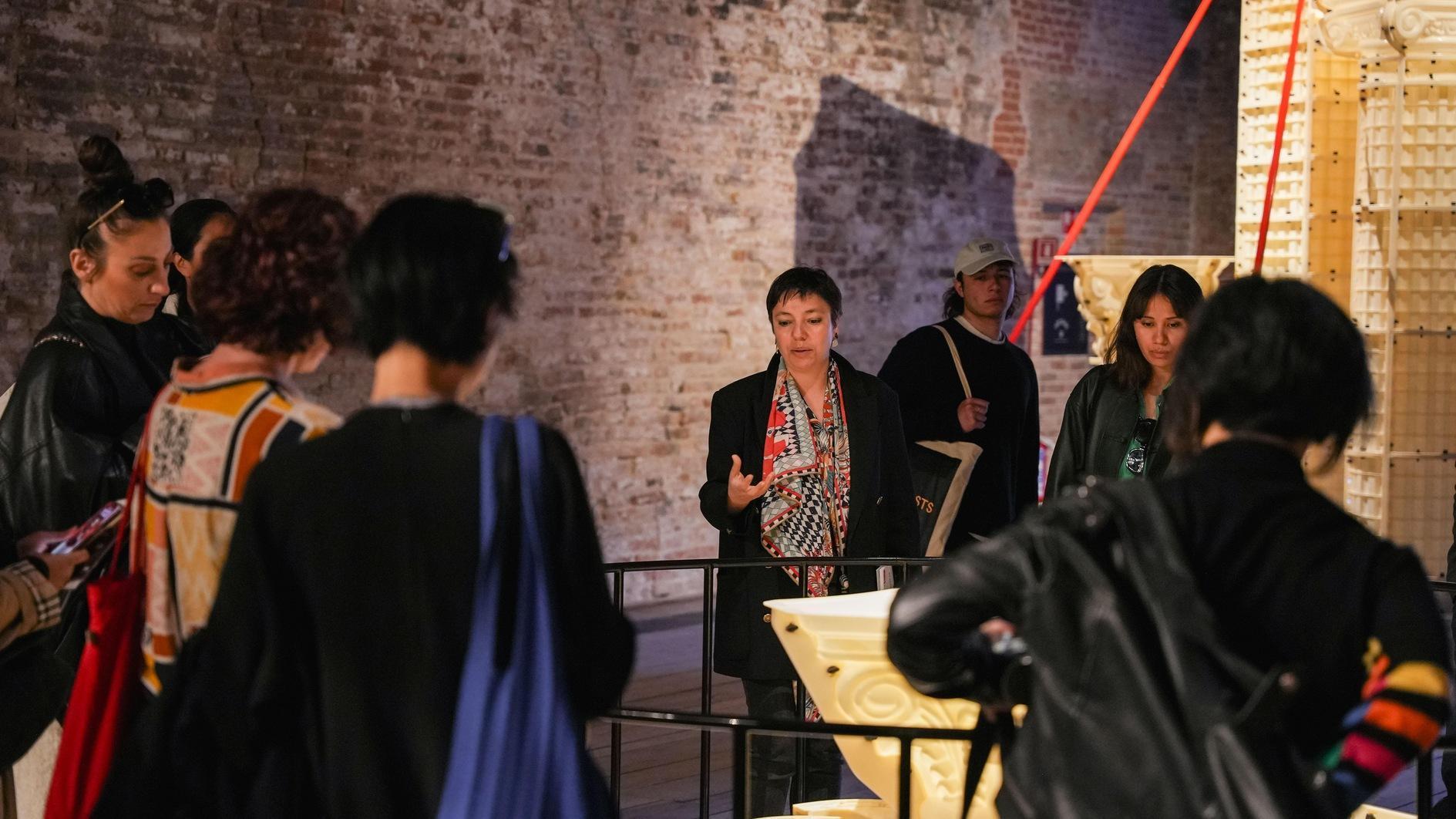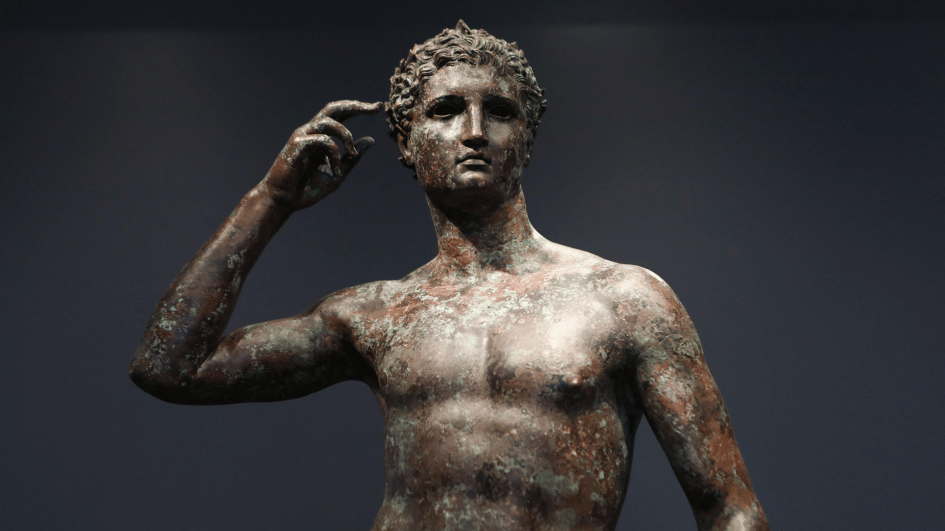‘Hollow and Broken: A State of the World’ represents Türkiye at Venice
VENICE

Gülsün Karamustafa’s installation at Venice invites viewers to consider the tragic and tumultuous realities of a world impacted by wars, earthquakes, migration and nuclear peril.
The Türkiye Pavilion presents “Hollow and Broken: A State of the World,” a site-specific installation by Gülsün Karamustafa, one of Türkiye’s most influential and outspoken artists, at the 60th International Art Exhibition – La Biennale di Venezia.
Situated in the Arsenale’s historic Sale d’Armi, the exhibition runs through Nov. 24.
Karamustafa’s installation invites viewers to consider the tragic and tumultuous realities of a world impacted by wars, earthquakes, migration and nuclear peril. Comprising an interconnection of sculptural works that champion her use of disparate materials, the premiere of a new film and a sound installation, these works reflect her perception of the world as broken and empty.
Space plays a central role in the exhibition, with Karamustafa drawing inspiration from the rectangular shape of the Sale d’Armi, reminiscent of the dimensions of the historical Hippodrome of Constantinople in Istanbul and the building’s former history, reinforcing her connection with the surroundings.
Upon entering the Pavilion, visitors encounter three striking chandeliers suspended from above, crafted from discarded Venetian glass, each representing a monotheistic faith: Christianity, Judaism and Islam. These luminous symbolic objects are shrouded in a web of barbed wire – conveying the historic tensions and quarrels between each religion and serving as a lens through which she explores the state of our world today.
This concept echoes Karamustafa’s 1998 artwork, “Trellis of My Mind,” a 20-meter frieze composed of 300 colorful religious illustrations from Islamic, Christian and Jewish manuscripts. The artwork portrays the intersection and coexistence of these religions, drawn from her experiences living in Istanbul. Despite their shared narratives, Karamustafa acknowledges these religions have endured perpetual conflict throughout history and continue to be shaped by her personal memories of past wars.
Hollow, plastic molds that resemble concrete columns are scattered throughout the space, the choice of materials starkly contrasting the traditional associations to glory, artillery and power.
The column molds, supported only by propping devices, embody the artist’s feelings of emptiness and brokenness in the current world – their vacant nature is accentuated by lighting, contrasting the “force” of columns inherent in architecture – stability, prowess, durability and victory.
Shattered Venetian glass emerges as a recurring motif within the installation as a material that resonates deeply with Karamustafa’s feelings. Situated within the pavilion are four dismantled wheeled carts – with their ends cut off on either side – loaded with discarded remnants of Murano glass shards, evoking the transportation of heavy cargo.
Propped up solely by rails, the carts give the impression that they’re floating, albeit constrained by their restricted movement. These works establish a direct link to the historical significance of the Sale d'Armi, once Venice’s largest production centers during the pre-industrial era and a potent symbol of military power.
Premiering for the first time is a new film by the artist, comprising black and white images from found propaganda footage depicting migration, war and demonstrations from around the globe. Originally screened in cinemas, these images have been reimagined by Karamustafa, devoid of the cameraman’s original viewpoint, to spotlight the human condition. By reframing this material, the film delves deeper, shedding light on the suffering of the individuals captured in the footage. The film interweaves all elements of the artist’s installation into an impactful statement. An accompanying sound composition both envelops and shadows the movement of visitors, where a deep, resonant tone fills the air, fluctuating in intensity as it traverses the exhibition space.
“What I am dealing with,” Karamustafa says of this work, “is the state of a world hollowed out to the core by wars, earthquakes, migration and nuclear peril unleashed at every turn, threatening humankind while nature is ceaselessly scathed and the environment made sick. I attempt to physically and emotionally summon into existence this phenomenon: The emptiness, the hollowness, the brokenness produced by the devastation that has become commonplace, whose pace becomes ever more impossible to keep up with, by the unimaginable grief that keeps on striking again and again at relentless intervals, by empty values, identity struggles and brittle human relationships.”
















